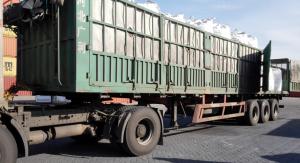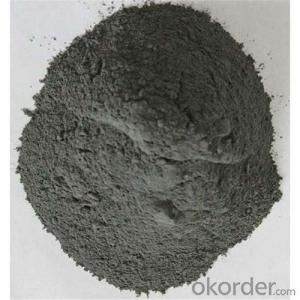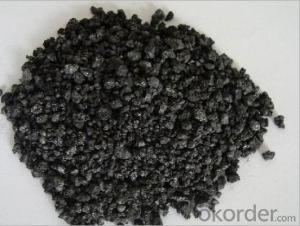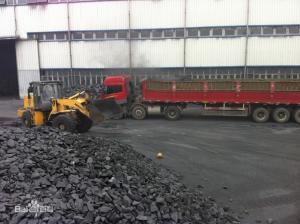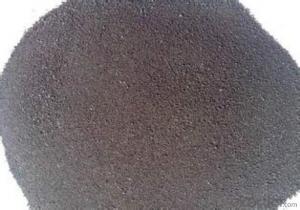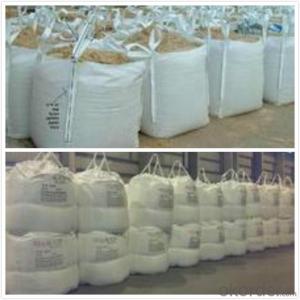Calcined Petroleum Coke Natural Chemical Powder
- Loading Port:
- Tianjin
- Payment Terms:
- TT or LC
- Min Order Qty:
- 20 m.t.
- Supply Capability:
- 1500 m.t./month
OKorder Service Pledge
OKorder Financial Service
You Might Also Like
Quick Details
Place of Origin: China (Mainland)
Application: carben additives
Dimensions: fix carben morethan98%,sulphur less5%
Chemical Composition: nature graphite powder
attribute: briquette grade
shape: <SPAN style="BORDER-BOTTOM: 0px; BORDER-LEFT: 0px; PADDING-BOTTOM: 0px; MARGIN: 0px; PADDING-LEFT: 0px; PADDING-RIGHT: 0px; FONT-FAMILY: inherit; WORD-WRAP: break-word; VERTICAL-ALIGN: baseline; BORDER-TOP: 0px; BORDER-RIGHT: 0px; PADDING-TOP: 0px" class=attr-value title=block/powder>block/powder
classify: carbon additives/petroleum coke
Packaging & Delivery
| Packaging Details: | 50kg/bag,25kg/bag or as customer requirement |
|---|---|
| Delivery Detail: | 20DAYS after payment |
Specifications
Calcined Petroleum Coke Natural Chemical Powder
Petroleum coke products can be divided into needle coke, sponge coke, projectile coke and coke breeze four kinds.
Calcined Petroleum Coke
F.C.: 98.5%MIN
ASH: 0.8% MAX
V.M.: 0.7%MAX
S:0.5%MAX
Moisture: 0.5%MAX
Structure
Calcined Petroleum Coke Natural Chemical Powder
Shape: granule
- Dimensions: 0-1mm, 1-5mm, 1-6mm, 2-8mm, etc
- Product Type: Carbon Additive
- C Content (%): 98-99.5% MIN
- Working Temperature: -
- S Content (%): 0.5%-0.7%MAX
- Ash Content (%): 0.7%MAX
- Volatile:0.8%MAX
- Moisture: 0.5% MAX
- ADVANTAGE: low ash & sulfur
- COLOR: Black
Feature
Calcined Petroleum Coke Natural Chemical Powder
Physics and chemistry performance:
Unit | Index | |||||
No.1 | No.2 | No.3 |
| |||
Density | g/cm3 | 2.04 | 2.00 | 2.00 | ||
sulphur content | %≤ | 0.5 | 1.0 | 2.5 | ||
volatility | %≤ | 0.5 | 0.5 | 0.5 | ||
ash content | %≤ | 0.5 | 0.5 | 0.5 | ||
moisture | %≤ | 0.3 | 0.5 | 0.5 | ||
charcoal | %≤ | 98.5 | 98.0 | 98.0 | ||
Image
Calcined Petroleum Coke Natural Chemical Powder
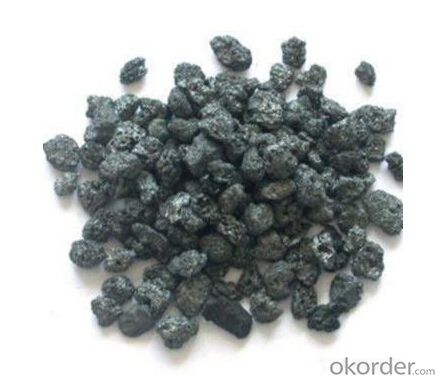
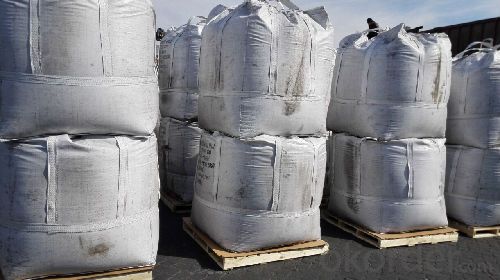
FAQ:
Calcined Petroleum Coke Natural Chemical Powder
How to classify calcined petroleum coke?
1) According to difference of sulfur content, can be divided into high sulfur coke (sulfur content more than 4%), sulphur in coke sulfur content (2% 4%) and low sulfur coke (sulfur content below 2%).
2) Petroleum coke products can be divided into needle coke, sponge coke, projectile coke and coke breeze four kinds:
3) Needle coke, has obvious needle-like structure and fiber texture, mainly used for steel-making in high power and ultra-high power graphite electrode. As a result of needle coke in sulfur content, ash content, volatile matter and true density and so on have strict quality requirements, so the production process of needle coke and raw materials have special requirements.
4) The sponge coke, high chemical reactivity, low content of impurities, mainly used in the aluminum industry and carbon industry.
5) Focal or spherical coke: the projectile shape is round, diameter 0.6-30 mm, usually from the production of high sulphur, high asphaltic residual oil, can only be used as industrial fuel power generation, cement etc.
6) Coke breeze: fluidized coking process, the fine particles (0.1- 0.4 mm) in diameter, high volatile, high expansion coefficient, cannot be directly used for electrode preparation and carbon industry.
Advantage:
Calcined Petroleum Coke Natural Chemical Powder
1. High quality and competitive price.
2. Timely delivery.
3. If any item you like. Please contact us.
Your sincere inquiries are typically answered within 24 hours.
- Q: Which is better, 13 and 14 carbon breath tests?
- The following is the range of feesC14- carbon 14 breath test, each province Price Bureau regulations are different, 95-120 yuanC13- carbon 13 breath test, 150-220 yuan
- Q: What do you stand for?Tar, smoke, nicotine, and carbon monoxide. What do you mean? What's the size of the smoke, or the size of the smoke? What's the connection? Smoking is harmful, so how do you choose to smoke smaller cigarettes?
- These three values referred to as physical and chemical indicators, my understanding is this: the Tar Nicotine tar is representative of nicotine. The carbon monoxide is simply to give the environmental protection department and health department occasional children get. Like the automobile exhaust mean.
- Q: What are the impacts of carbon emissions on the stability of coastal areas?
- Coastal areas are greatly affected by carbon emissions, which create numerous challenges for both the environment and the communities living there. Sea-level rise is one of the most notable consequences, triggered by the melting of polar ice caps and the expansion of seawater due to rising global temperatures. As greenhouse gases like carbon dioxide accumulate in the atmosphere, they trap heat and warm the planet. Consequently, glaciers and ice sheets melt, contributing to the rise in sea levels. Sea-level rise directly endangers coastal regions, leading to increased erosion, flooding, and the loss of valuable land. As water levels climb, shorelines recede, eroding beaches and cliffs, and jeopardizing coastal infrastructure and habitats. This erosion not only threatens the stability of coastal ecosystems but also puts human settlements at risk, resulting in the displacement of communities and property loss. Additionally, the surge in carbon emissions causes ocean acidification, as excess carbon dioxide is absorbed by the ocean, decreasing its pH levels. Acidic waters have detrimental effects on marine life, particularly coral reefs, shellfish, and other organisms that rely on calcium carbonate for their shells and skeletons. With increased ocean acidity, these organisms struggle to form and maintain their protective structures, ultimately leading to the degradation of coastal ecosystems and loss of biodiversity. Furthermore, carbon emissions intensify extreme weather events like hurricanes and tropical storms. Warmer ocean temperatures provide more energy for these storms, making them stronger and more destructive. These events can cause significant damage to coastal infrastructure, including buildings, roads, and utility systems. Moreover, they can result in loss of life and livelihoods, further increasing the vulnerability of coastal communities. In conclusion, carbon emissions have extensive impacts on the stability of coastal areas. Sea-level rise, ocean acidification, and the intensification of extreme weather events all contribute to the deterioration of coastal ecosystems, loss of biodiversity, erosion, and coastal flooding. These consequences not only threaten the environment but also pose significant risks to human settlements. Urgent measures for mitigation and adaptation are necessary to safeguard coastal areas and the communities depending on them.
- Q: How is carbon used in the production of rubber?
- Due to its unique properties and ability to enhance the overall quality and performance of rubber products, carbon finds widespread use in rubber production. An essential component in rubber manufacturing, carbon black is formed when hydrocarbons are incompletely burned. To enhance the strength, durability, and resistance to wear and tear of rubber, carbon black is added to rubber formulations. Acting as a reinforcing agent, it increases tensile strength and abrasion resistance by interlocking with the rubber polymer chains and fortifying the material's overall structure, making it more resilient. Moreover, carbon black improves the electrical conductivity of rubber, making it valuable in applications that require conductivity. It also enhances the rubber's resistance to degradation from exposure to sunlight by boosting its UV resistance. Furthermore, carbon black can enhance the color and appearance of rubber products, imparting a deep black hue. Furthermore, carbon black can serve as a filler in rubber compounds, reducing production costs while maintaining or even improving the rubber's mechanical properties. By substituting part of the more expensive rubber polymer with carbon black, manufacturers can achieve cost savings without compromising the desired performance characteristics of the rubber. In conclusion, carbon plays a vital role in rubber production by enhancing its strength, durability, conductivity, UV resistance, and appearance. Rubber products would lack the necessary properties for their intended applications without carbon.
- Q: What are the applications of carbon nanomaterials in medicine?
- Due to their unique properties and potential applications, carbon nanomaterials have emerged as promising tools in the field of medicine. One key application of these nanomaterials is in drug delivery systems, where they can be functionalized with drugs for targeted delivery to specific cells or tissues. The large surface area of carbon nanomaterials allows for more efficient drug loading, leading to improved therapeutic efficacy and reduced side effects. In the field of tissue engineering, carbon nanomaterials show great potential as scaffolds for supporting the growth and regeneration of damaged tissues. Their excellent mechanical strength and biocompatibility make them suitable for applications like bone and cartilage repair. Additionally, their electrical and thermal conductivity properties make them ideal for creating bioelectrodes and biosensors, which can be used for various diagnostic and monitoring purposes. Furthermore, carbon nanomaterials have been investigated for their antimicrobial properties. They have demonstrated the ability to inhibit the growth of bacteria and fungi, making them potential candidates for developing new antimicrobial agents. This could be particularly beneficial in preventing and treating infections in medical devices and implants. Another application of carbon nanomaterials in medicine is in imaging and diagnostics. These nanomaterials can serve as contrast agents in imaging techniques like magnetic resonance imaging (MRI) and fluorescence imaging. Their unique optical and magnetic properties enable enhanced imaging and improved disease detection, such as in cancer. Carbon nanomaterials also hold promise in the field of cancer therapy. They can be utilized in photothermal therapy, where they convert light into heat and selectively kill cancer cells. Additionally, they can be used in photodynamic therapy, where light activation triggers the generation of reactive oxygen species, leading to the destruction of cancer cells. In conclusion, carbon nanomaterials have a wide range of applications in medicine, including targeted drug delivery, tissue engineering, antimicrobial agents, diagnostic imaging, and cancer therapy. Ongoing research and development in this field have the potential to revolutionize medical treatments and enhance patient outcomes.
- Q: Emerald garden high carbon tempered metal
- The middle gate's most advanced war puppet! 3 o'clock, 9 o'clock position.Black dealers are also available
- Q: How does carbon contribute to the strength of alloys?
- Carbon contributes to the strength of alloys by forming interstitial solid solutions with metals, which increases the hardness and strength of the material. The carbon atoms occupy the spaces between the metal atoms, creating lattice distortions and enhancing the overall strength of the alloy. Additionally, carbon can also form compounds with metals, such as carbides, which further improve the hardness and wear resistance of alloys.
- Q: What is the concept of carbon equivalent? What is the relationship between carbon equivalent and weldability?
- C equivalent =[C+Mn/6+ (Cr+Mo+V) /5+ (Ni+Cu) /15]*100% formula: C, Mn, Cr, Mo, V, Ni, Cu are elements in the steel contentCarbon steel, determine the strength and weldability of the main factors is the carbon content. Alloy steel (mainly low-alloy steel) in addition to all kinds of alloy elements on the strength of carbon steel and welding also plays an important role.
- Q: How do human activities contribute to carbon emissions?
- Human activities contribute to carbon emissions in various ways. One major source is the burning of fossil fuels such as coal, oil, and natural gas for transportation, electricity generation, and industrial processes. Deforestation and land-use changes, mainly for agriculture and urbanization, also release significant amounts of carbon dioxide into the atmosphere. Additionally, industrial processes, including cement production and chemical manufacturing, release greenhouse gases. Overall, our reliance on fossil fuels and unsustainable land management practices are the primary drivers of human-induced carbon emissions.
- Q: How does carbon impact the productivity of marine ecosystems?
- Carbon impacts the productivity of marine ecosystems by influencing the growth and survival of primary producers, such as phytoplankton, which are the foundation of these ecosystems. Increased carbon dioxide levels can stimulate phytoplankton growth in some cases, but excessive amounts can lead to detrimental effects like ocean acidification. This can disrupt the delicate balance of marine ecosystems, affecting the availability of nutrients, food chains, and overall productivity.
Send your message to us
Calcined Petroleum Coke Natural Chemical Powder
- Loading Port:
- Tianjin
- Payment Terms:
- TT or LC
- Min Order Qty:
- 20 m.t.
- Supply Capability:
- 1500 m.t./month
OKorder Service Pledge
OKorder Financial Service
Similar products
Hot products
Hot Searches
Related keywords
